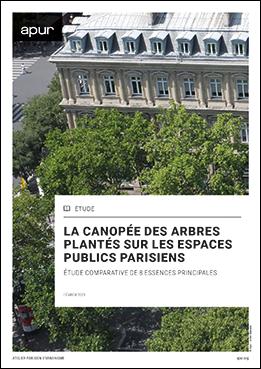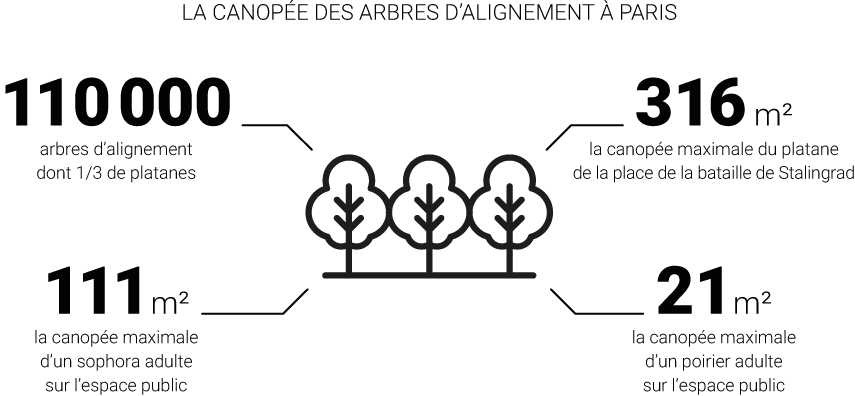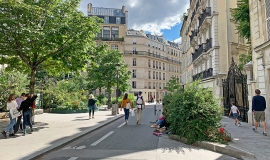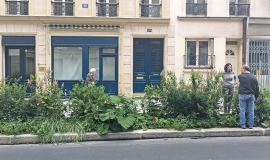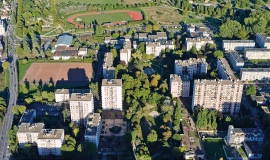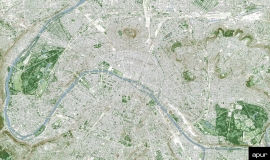Trees are today considered as one of the inescapable solutions for cities to adapt to climate change because of the shade and coolness they provide. This is why Apur has documented, in this study, the tree cover in Paris which is becoming a new indicator.
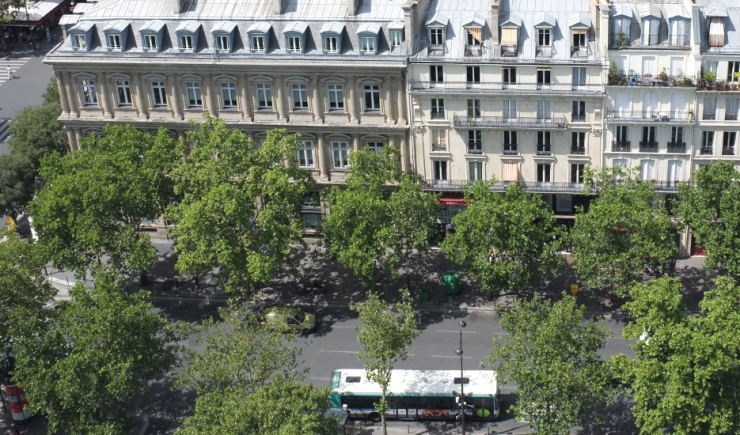
Many local authorities are implementing policies to green their territory in order to deal better with periods of heat waves. The ecological services provided by trees are numerous but it is mainly the cool freshness their coverage gives that is targeted by tree planting policies today.
This study proposes to document and quantify the tree cover of 8 species of adult trees which are the most planted in Parisian public spaces: plane tree, horse chestnut, silver linden, sophora, Norway maple, hackberry, Turkish hazel and pear tree.
Understanding the growing conditions of the present tree cover enables a forward looking vision of the role that new plantations can have in the Parisian tree cover and to comprehend the conditions.
This study has been carried out thanks to the Tree Database managed by the Department of Green Spaces, and the analysis of aerial photography which makes it possible to study the coverage of all the trees belonging to the eight species. Work was first carried out on all the trees, giving an overall picture of the tree cover of each species in Paris. Then more detailed work was done on all the trees considered to be adult, in order to subtract young plantations from this analysis and to focus on the quality of coverage that can be expected at maturity. Finally, we took a cross-reference look at the six tree species with extensive foliage cover, planted in similar situations in order to understand the behaviour of each species.
The results of this analysis provide detailed information about the tree cover and various factors that effect its development, such as the planting distance from building facades, the distance between trees planted in an alignment and different urban contexts.
It was found that for large growing trees, which can reach a coverage area of more than 100 m² under favourable conditions, the limiting factor is the distance from buildings and the spacing between trees. It is possible to vary the coverage of a tree in an alignment spaced from 60 to 80 m² by slightly increasing the distance between the trees when planting.
Medium-sized trees like the Turkish hazelnut and small-sized trees such as the pear tree, quickly reach their maximum coverage (between 30 to 40 m² for the former and 15 to 20 m² for the latter), regardless of the spacing between trees and the distance from facades.
The study has also made it possible to identify the remarkable cover that one isolated trees can give, such as the plane tree in the Place de Stalingrad which spreads over 316 m². It also highlights the importance of groves and tree lined alleys and avenues for their impact on the landscape and the shade they provide, although the foliage cover of each tree is smaller than when standing alone. This work shows the need to combine the different objectives sought by planting alignments, and particularly to increase the number of tree, to increase the tree cover and its cooling nature and to reinforce the many aspects of ecological continuity.

